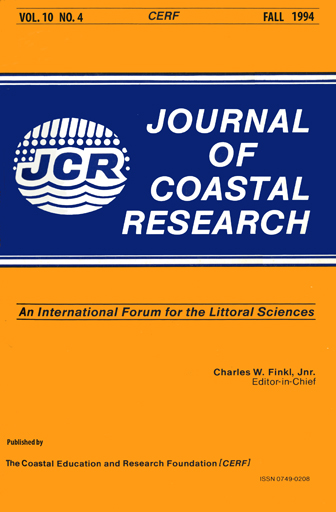Straw Men, Glass Houses, Apples and Oranges: A Response to Carew and Mylroie's Comment on Hearty and Kindler (1993)
Abstract
The purpose of the HEARTY and KINDLER (1993a) paper was to provide an overview of the formation of Bahamian Islands, with specific examples from San Salvador Island (SSI). The "perspective" is new because for the past 12 years Bahamian stratigraphy was viewed as tripartite (Holocene, late Pleistocene, middle Pleistocene). Over that period, there was no apparent evolution of the composite section only deletions from it. Table 1 is a comparison between the latest C&M stratigraphic section (CAREW et al., 1992, page 5) and ours from SSI (HEARTY and KINDLER, 1993a). We have significantly altered their proposed tripartite model by adding two new formations, paleosols, protosols, and new members. All newly defined units were based in morphostratigraphy, sedimentology, biostratigraphy, and petrology. The stratigraphic column of San Salvador was confirmed by whole-rock (not Cerion land snails) amino acid racemization (AAR) data in Table 3 (HEARTY and KINDLER, 1993a) and Table 1 below, including mean whole-rock A/I ratios from that study. In fact, the succession of all rock units is indeed concordant with whole-rock AAR ratios (Table 3, HEARTY and KINDLER, 1993a), including intra-formational units of Stages 1 and 5e.


